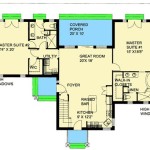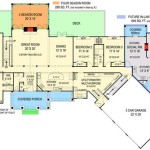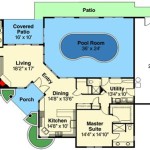How To Read Drawing Plans
If you have no prior experience with technical drawings, reading building plans may appear to be a difficult undertaking. However, with a simple step-by-step guide, you can improve your understanding and confidently navigate the intricacies of house plans.
Technical building plans serve as an essential tool in the home-building process, providing a comprehensive visual representation of the proposed structure. These plans outline every aspect of the building, from the foundation and framing to the electrical and plumbing systems.
By comprehending these plans, you can gain valuable insights into the design and construction of your home. Whether you are a homeowner, contractor, or real estate professional, the ability to read drawing plans is crucial for informed decision-making.
Understanding the Basics
Before delving into the details of drawing plans, it is essential to grasp some fundamental concepts:
- Scale: Plans are drawn to a specific scale, which indicates the ratio between the drawing and the actual building.
- Symbols: Standardized symbols represent various building components, such as walls, doors, and windows.
- Dimensions: Measurements are indicated on plans to specify the size and location of each element.
Types of Drawing Plans
House plans typically consist of several different types of drawings, each focusing on a specific aspect of the building:
- Floor Plans: These drawings show the layout of each floor, including the location of rooms, doors, and windows.
- Elevation Drawings: Vertical views of the building from different sides, displaying the exterior appearance and window placement.
- Section Drawings: Cross-sectional views that reveal the interior structure, materials, and dimensions.
- Detail Drawings: Detailed views of specific elements, such as stairs, moldings, or built-in furniture.
Tips for Reading Drawing Plans
Follow these tips to enhance your ability to read drawing plans:
- Start with the Site Plan: Begin by understanding the overall layout of the property, including the location of the building on the site.
- Study the Floor Plans: Identify the number of rooms, their sizes, and the flow of space. Pay attention to the placement of doors, windows, and built-in features.
- Examine the Elevations: Visualize the exterior appearance of the building from different angles. Note the roofline, window styles, and any exterior finishes.
- Review the Sections: Understand the interior structure by examining the cross-sections. Pay attention to the materials used for framing, insulation, and finishes.
- Check the Details: Refer to detail drawings for specific information about important elements, such as stairs, railings, or trim.
- Identify the Legend: Locate the legend in the drawings, which provides a key to the symbols used.
- Seek Expert Help: If you encounter any difficulties or uncertainties, do not hesitate to consult with an architect or experienced contractor.
Conclusion
By following these steps and tips, you can gain a comprehensive understanding of house plans. This knowledge empowers you to make informed decisions about your home, communicate effectively with contractors, and visualize the final result before construction begins. Remember, reading drawing plans is a skill that improves with practice. With perseverance and a desire to learn, you can master this valuable skill and navigate the world of building design with confidence.

How To Read Architect S Drawings With Wikihow

Learn To Read Understand Construction Drawings How Floor Plans Lesson 5

How To Read House Plans Floor Building In 10 Minutes Archid

How To Read Architect S Drawings With Wikihow

The Basics How To Read Architectural Plans Watchdog Project Management

How To Read House Plans The Construction Set

Plan Reading Pfcs

How To Read Architectural Plans Jda Lammin Architects

How To Read Construction Plans Framing

Do You Know How To Read Floor Plans








